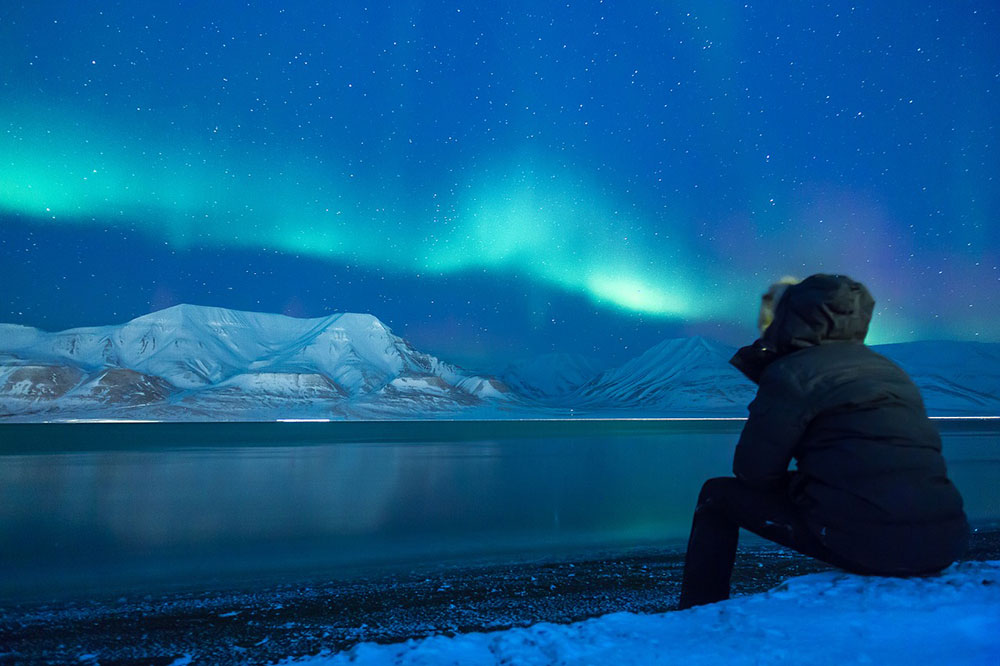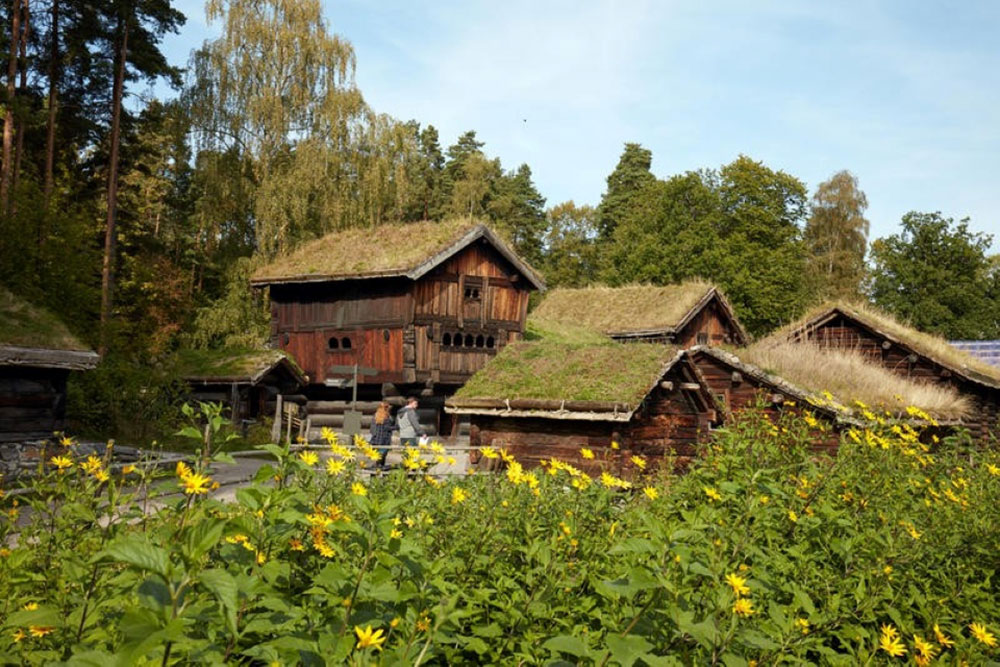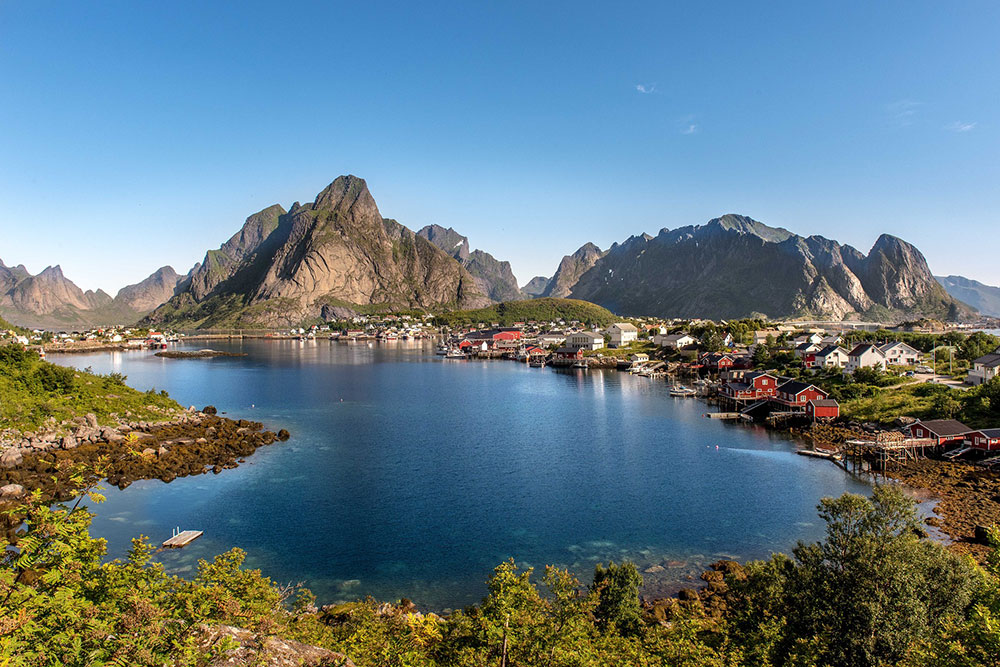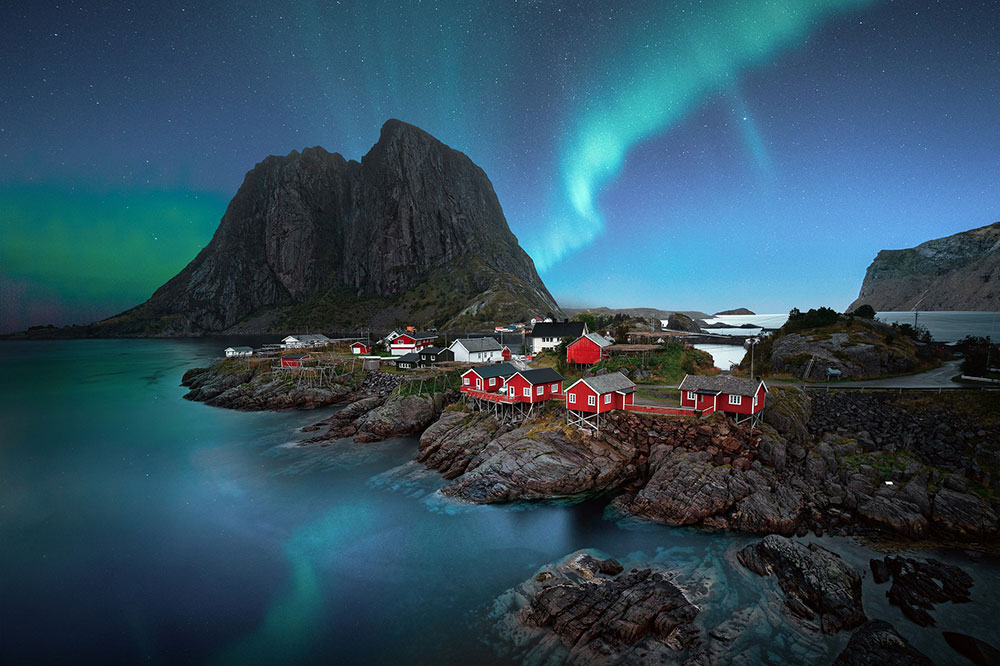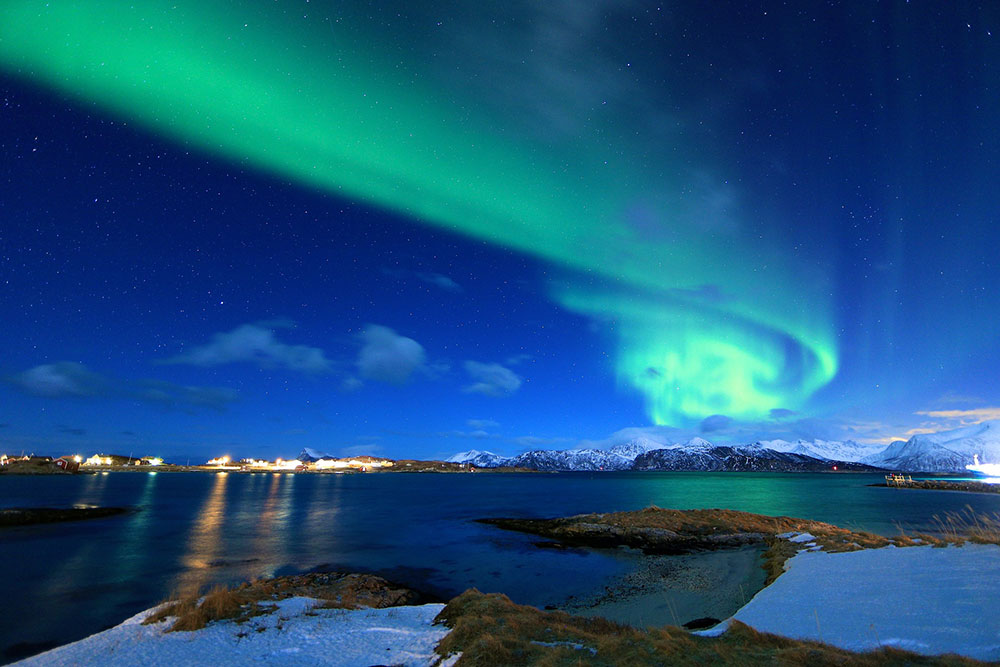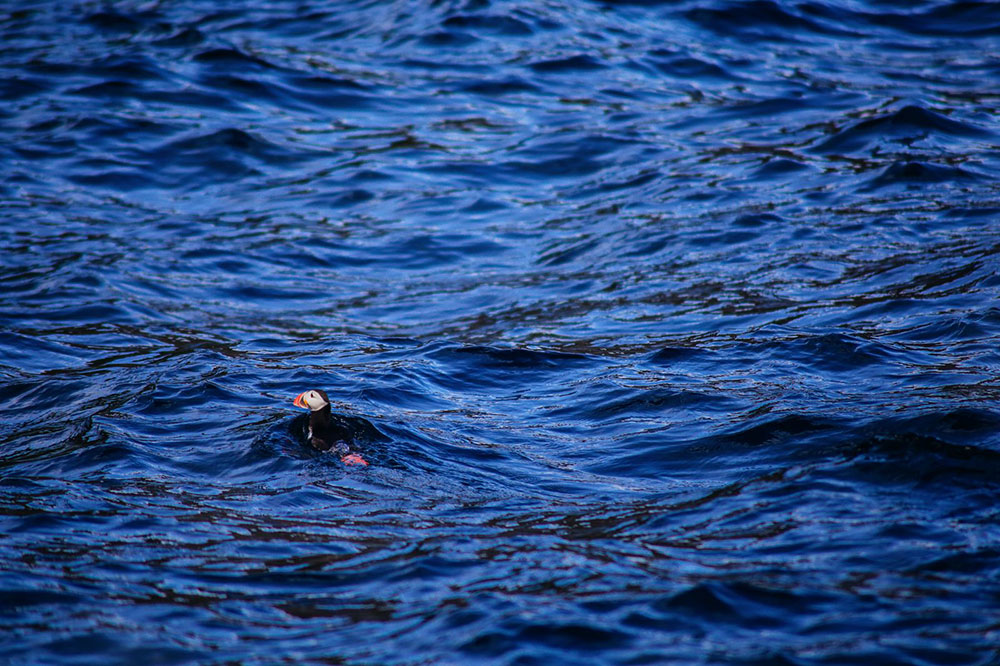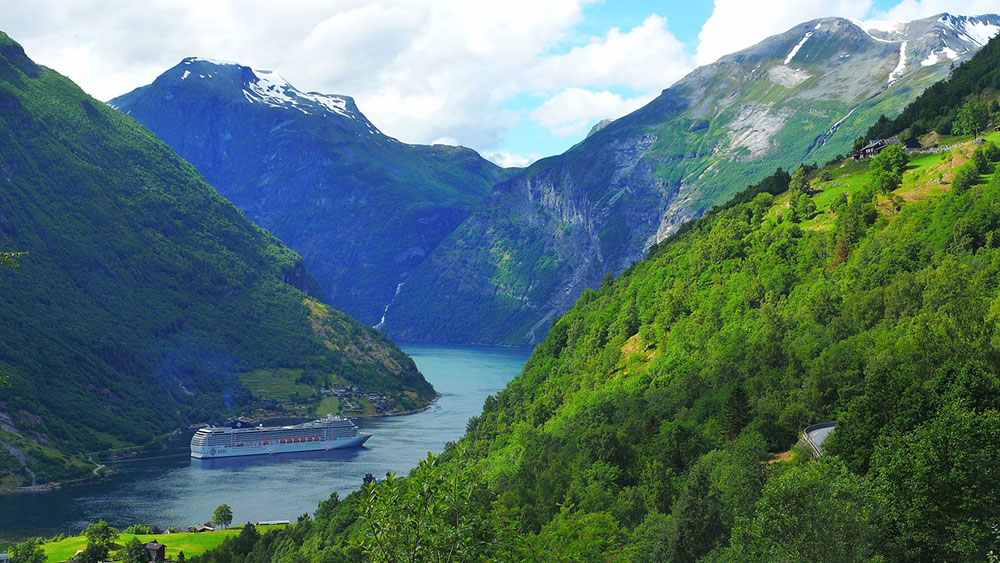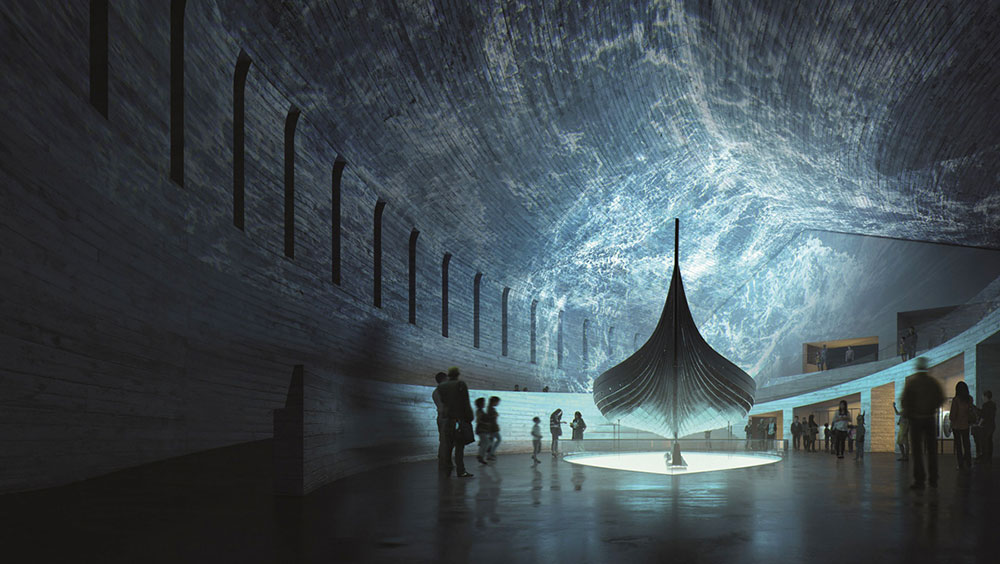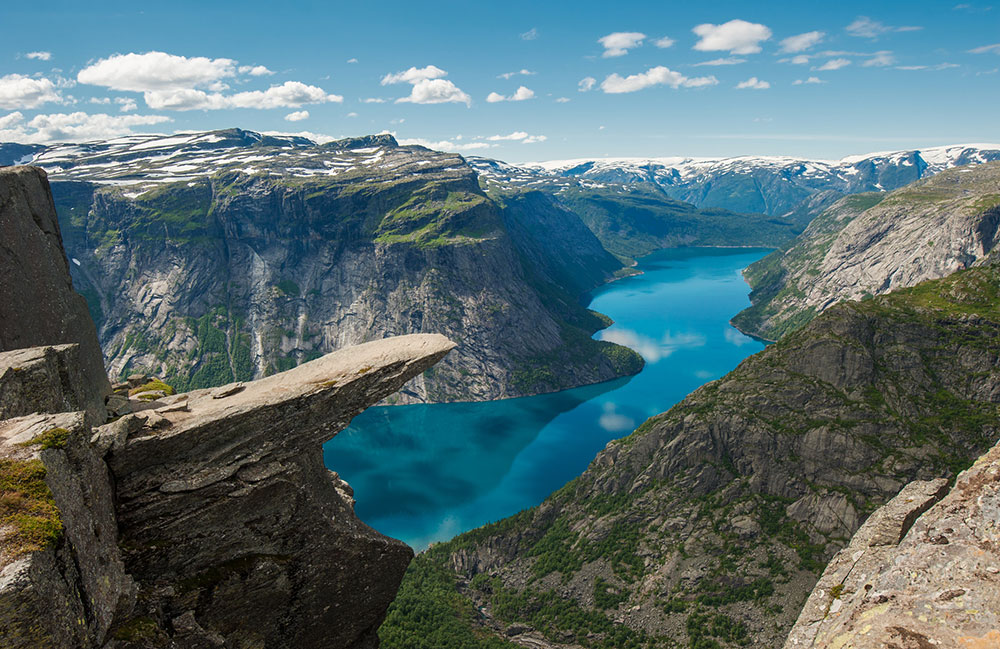With an extensive coastline and breathtaking views, Norway is an incredible European destination. While different people find beauty in different things, in Norway, there’s something for everybody. If cities are your places of choice, there’s Oslo, Bergen, and Stavanger, among others. Fill your days up by visiting art centers, admiring historical buildings, or going to the opera. For nature-lovers, the urge to adventure and explore will take you to the great outdoors. Which there is plenty of in Norway: from the awe-inspiring fjords along the west coast, to the beauty of the Lofoten Islands, or the Briksdal Glacier. And if that’s not enough, the culture in this Scandinavian country is inspiring and amazing to experience. But enough preamble, let’s dive right into 10 solid ideas for places to visit in Norway, whatever your preferences!
Add These 10 Places to Visit in Norway to Your Bucket List
Get ready for an adventure of a lifetime exploring beautiful Norway. Friendly people, breathtaking nature, modern cities, and fascinating history–you’ll never be bored with these Norway tourist attractions:
1. Oslo
Oslo is the capital city of Norway. Although a major hub, only 20% of Oslo’s extensive land has been developed. While the rest of the city hosts parks, open spaces, hills, and forests. You can head out to the Norwegian National Opera & Ballet. Or visit some stunning museums to catch a glimpse of the country’s enchanting history. Oslo also has amazing architectural marvels including the medieval castle of Akershus, and the Oslo Cathedral. And Oslo hosts one of the very few documented zero-energy buildings (ZEB) in the world. Take time to visit the Snøhetta ZEB Pilot House and wonder at its innovation. For the outdoorsy traveler, spend some time relaxing in the gardens in Oslo. And if visiting in winter, go skiing in the magical mountains close by. Overall, Oslo is widely considering one of the best cities in Norway for good reason–for both tourists and locals alike.
2. Frogner Park
One of the largest public parks in Oslo is Frogner Park. And it is massive, covering roughly 110 acres. Historically, the park is part of Frogner Manor, and as such is one of Norway’s major tourist attractions. The Manor was converted to an Oslo museum which houses various cultural and historical artifacts. One of the key attractions within Frogner Park is the Vigeland Sculpture Park. Which holds 650 stunning sculptures crafted from 1924 to 1943 by Gustav Vigeland. In addition to the sculpture garden, there are fountains and bridges. The centerpiece is the towering 16-meter monolith that contains 121 intertwined human bodies. Frogner Park receives over a million visitors per year and with good reason. Other than the sculptures, the park also boasts a stadium, the Frogner baths, and a fabulous rose garden. Whether you are out for a romantic evening or just want to have fun in a beautiful, secure, and interesting environment, Frogner Park is the place to visit. The weather does get chilly so it is advisable to wear something warm for your visit. To further fortify you against the cold, grab a cup of coffee from one of the adjacent coffee houses.
3. Viking Ship Museum
This cultural history museum in Oslo is one of the most captivating of Norway’s many attractions, and certainly deserves its own mention on our list. The Vikings were seafaring warriors whose legendary exploits continue to fascinate to this day. Some of the Vikings set sail from Norway on their epic voyages. And a trip to Norway would be incomplete without a visit to learn the history of these warriors. At the museum you can find The Tune, Gokstad, and Oseberg, which are preserved Viking ships. When their rich owners died the ships were relieved of their sailing duties, towed to the shore, and used for funeral rituals for those owners. A trip to the museum includes a film that sheds light on the life of the Vikings and their process of shipbuilding. During the museum tour, English-speaking guides are at hand to explain the day-to-day life of these warriors. Archaeologists have pieced together the framework of the ship. Which gives you a view of the shape and structure of these boats and the workmanship that went into building them.
4. Geiranger Fjord
The Geiranger fjord is classified as a UNESCO World Heritage site, as well as the filming site of several films with its breathtaking views. The story of the fjords began about 10,000 BC. At the time, glaciers covered Norway. With their retreat, the fjords were born. There are various means you can use to tour the fjord. For cars the trip begins at Langvatnet following Norwegian County Road 63 to Geiranger. One can access the nearby Dalsnibba mountain through a series of steps cut into the mountainside known as Dalsnibba Skywalk. There is a wooden ramp at the top that gives a breath-taking view of the fjord. Or you can use the zigzagging Eagle Road. A ferry runs the route between Geiranger and Hellesylt daily. It passes by the waterfalls and has a commentary onboard that gives information about the fjord in various languages. Some cruise ships also sail along the Fjord. Notable features along the route are the spectacular Seven Sisters Waterfalls, which have the Suitor waterfall facing them. Then, there is the Bridal Veil waterfall, with its elegant and otherworldly drape of water cascading down dramatic cliff faces. Don’t forget the Skagefla and Knivsfla cliff edge farms with their rich history dating back to the middle ages.
5. Runde Island
One of the most beautiful places in Norway courtesy of its fabulous birdlife is Runde Island. The sea around it held a secret for ages. Which adds to the island’s allure. Here are the two main attractions while on Runde Island.
Puffin Watching
One of the best things to see in Norway is its incredible birdlife, not least of which is the population of puffins on Runde Island. Over 80 bird species have been verified nesting on the island’s cliffs. A further 230 species have been observed there. Out of all these birds, the most attractive are the thousands of puffins with their brightly colored beaks and webbed feet. The puffins lay only one egg per couple and both parents take care of the hatchling until it is strong enough to fend for itself. In August the young chick is strong enough and heads to the open sea. The best time to watch the puffins is between 6-8 pm. Since they burrow their nesting place in the rock, they might not be visible during the other hours. Furthermore, visitors are not allowed to move too close to them so as not to interfere with the nesting. Other nesting birds found on the island include garnets, great skuas, and shags. Getting to Runde Island is easy because of the several tour companies that take visitors around. You can opt to go round the island by boat or get onto the island and hike up the marked route.
Explore the Treasure Island
Runde Island is also called Treasure Island. Because in 1972, divers rediscovered the wreck of the Dutch ship “Akerendam” which had gone down on January 19th, 1725. Divers of the day attempted to get to the wreck, but called it a day after salvaging just four chests in the summer of that year. The ship was laden with gold and silver coins for use in trading. However, bad weather sunk it with all the 200 crew feared dead. In the following days, dead crew members were washed ashore. Later, locals would pick the odd coins on the shore. When 3 divers rediscovered the wreck in 1972, little was left of it. The divers were allowed to keep two-thirds of the treasure for themselves while the rest was surrendered to the Norwegian government. The coins are on display in various museums in the country. Perhaps unsurprisingly, diving is still an incredibly popular pastime at this must-see Norwegian location.
6. Tromsø
This northern town is considered Norway’s gateway to the arctic. Within the municipality, you can experience the Arctic conditions but at a more friendly temperature. One of the biggest attractions of the town (and perhaps the most beautiful of Norway) is the display of the Northern Lights. The Northern Lights, or Aurora Borealis, is the name given to a display of vivid shifting lights in the sky. This action is caused by the magnetic field at the poles of the earth. Charged particles released by the sun interact with the atoms in the earth’s upper atmosphere Want to come close to some of the Arctic wildlife? Tromsø is the place to get close to the polar bear and wolves without compromising your safety. These animals, musk ox, and lynx are all found in Polar Park. For a more adrenaline-fueled adventure, go on a whale-watching safari. Nothing beats the size of these huge animals as they come up to the surface for air. The most common species is you’ll see is the sperm whale. Tromsø is also renowned as a cultural melting pot. With various music and film festivals taking place throughout the year. Some of which are the Northern Lights Music Festival, Tromsø Jazz Festival, and The Tromsø International Film Festival. The SMAK food festival gives visitors a chance to sample some of the local delicacies as well as other Norwegian dishes. And another highlight of cultural events is the reindeer racing that takes place during Sami Week. With all these amazing things to see and do, no wonder tourists regard Tromsø as one of the best places to visit in Norway.
7. Hamnøy
Fishing is one of the most important activities in Norway. This is hardly surprising considering the length of the coastline as well as the seafaring history of Norwegians. Modern fishing for trade is done using trawlers but traditional fishing also has its place. Hamnøy is the oldest fishing village and also one of the most charming of Norway’s towns. The village nestles in the Lofoten islands which is in the Moskenes municipality. Fisherman’s cabins, the oldest of which are over 100 years old, provide accommodation for visitors. However, despite the rustic look on the outside, the modern amenities including Wi-Fi fitted in these cabins make for a very cozy stay. Activities that you can enjoy in Hamnøy include bike and boat rentals, hiking, and fishing. You could also opt for more laid-back activities such as a visit to the local museums and art galleries. Here you will learn the history of the area as well as the culture.
8. Reine Village
If you are looking for a bit of quietness in a stunningly beautiful environment, then Reine has no parallel. The village lies 9 kilometers to the east of Moskene and is 100 kilometers from the Arctic circle. You can access the village through the E10 road or use the ferry that sets off from Bodo. To get the best of Reine, head to the village by road and sample the varied landscapes on the way. You should also stop by the roadside cafes to try some of the local food and maybe grab a fish sandwich snack. For accommodation, stay in a rorbuer, the traditional fisherman’s cabin. Luckily, these quant houses contain all modern conveniences for the comfort of travelers. Also, ensure you get to the village early as finding parking spaces can be tough. One of the best activities in Reine is hiking. The rugged mountain terrain next to the village gives you a stunning panoramic view that’s hard to beat. Fishing for cod is another favorite activity. It is rare to leave empty handed from a fishing trip in Reine. However, taking a kayak is the best way to enjoy the gems in these waters. A local guide will know the best spots to make your trip magical. By vacationing in Reine, you will get to enjoy the quintessential Norway small town experience.
9. Norwegian Museum of Cultural History
One of the best places to go in Norway to experience its rich past is the Norwegian Museum of Cultural History. Established in 1894 by Hans Aall, it opened its doors to the public in 1901. Since then, it has had several directors. In 1907, King Oscar II’s collection was incorporated into the museum. What makes the museum so interesting is its sheer size. There are 160 buildings on its expansive grounds. At the center of the grounds is a model of an old town. One of the most iconic buildings in the museum is the reconstruction of the Gol Stave Church that belongs to medieval times (1157-1216). Since Oscar II funded the church’s reconstruction, it technically belongs to the reigning monarch. The intricate design of the church and the objects within it are of immense historical interest. Various exhibits are on display in the museum. Exhibitions feature normal life on historic farms. As well as life in a coastal village. The focus is on Norwegian life from the 1500s to the present. A section known as The Apartment depicts the interiors of apartments from Wessel gate in the 19th century. The interiors draw their inspiration from 8 periods. Billed as one of the world’s oldest open-air museums, the Norwegian Museum has activities for both children and adults. Furthermore, there are areas where you can buy snacks as well as souvenirs.
10. Svalbard Islands
This island is located in the arctic ocean and about 800 kilometers from the Norway mainland. Because of its proximity to the North Pole, the island is bitterly cold during the winter. However, this does not take away from its beauty. Svalbard is special in many ways. To begin with, it is the northernmost town in the world. And the inhabitants are a mixture of people from varied nationalities. This is due there being no visa requirements to enter or live in the Svalbard islands – unless you’re traveling from mainland Norway. Fascinatingly, the island has polar bears that far outnumber the inhabitants! They number more than 3000 against a human population of about 300. Because of the threat posed by the wildlife, it is not uncommon to see the residents go about their daily chores with a rifle slung across the shoulder. 65% of the land consists of protected national parks. Quotas for some of the animals determine which animals the locals hunt. While some animals like the polar bear and walrus are protected. The islands have several arctic animal species that you can enjoy viewing. Among them are arctic foxes and reindeer. Plus, you can view the majestic whales and seals. Furthermore, the Northern Lights are visible in Svalbard when the skies are clear. But be aware, darkness reigns for four months and daylight another four. So, plan your trip accordingly.
Our Favorite Places to Visit in Norway: Wrapping Up
Norwegians have always been great fans of the outdoors as is evident in the variety of activities the country offers. From the landscape to the flora and fauna, you will have plenty of things to see and do. And the theatrics of the Aurora Borealis only add to the allure. Of course, a rich history has given rise to one of the most fascinating and modern cultures on earth, giving tourists no lack of options for things to do and see in Norway. Have you ever been to Norway, or would you like to go? Which of Norway’s tourist attractions most appeals to you? Sound off in a comment below!
